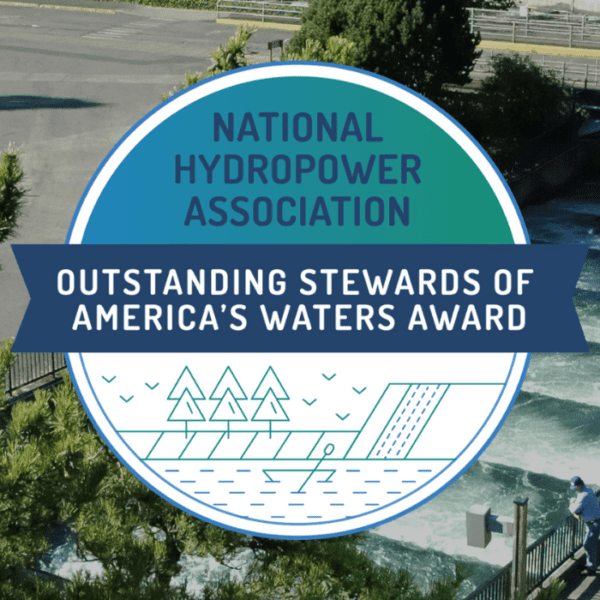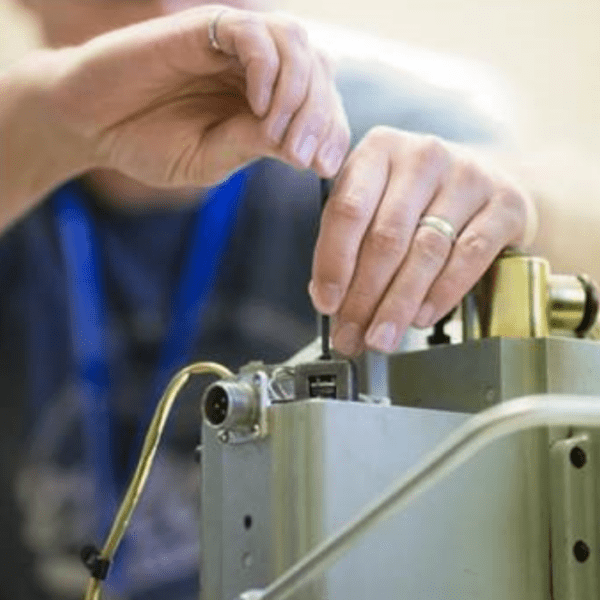A revolutionary fish passage system designed by Whooshh Innovations, who normally use the technology to safely transport fish over dams, assisted thousands of salmon by helping them overcome a river blockage in the remote Canadian wilderness, helping to saving the run.
The importance of the fish passage system working in real-time under challenging conditions speaks to Whooshh’s ability to create effective solutions to the fish-related challenges faced by hydropower project owners.
UNDERSTANDING THE PROBLEM: THE BIG BAR ROCKSLIDE SPELLS TROUBLE
In 2019, the Department of Fisheries & Oceans of Canada (“DFO”) discovered a large rockslide had created a natural dam across the entire Fraser River at Big Bar, north of Lillooet, in the province of British Columbia, Canada. The obstruction was blocking the spawning sockeye and Chinook salmon from the upper reaches of the largest salmon-bearing watershed in the province. As one of the most significant waterways in the world for migratory Chinook and sockeye salmon, the Fraser River is also an important part of the river ecosystems in Canadian and U.S. waters, which are valued by many stakeholders, including Native American and First Nations groups. Understanding the urgency of the situation, DFO had to find a way to get the migratory salmon safely past the obstruction so they could continue their journey, or risk losing the run.
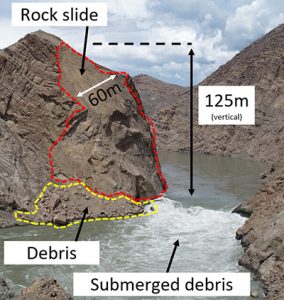
A visual breakdown of the rockslide at Big Bar.
The Big Bar site presented many challenges, including a looming three-month deadline – wherein the fish would work their way upriver and be blocked from reaching their spawning grounds. DFO began moving the fish by hand using volunteers and helicopters, but they quickly realized that a better, more efficient solution was needed to re-locate the hundreds of thousands of adult salmon anticipated to arrive. It was then that DFO reached out to Seattle-based Whooshh Innovations because of its unique fish passage technology, which is typically used to transport fish over dams, and it was versatile, which met this unique need.
THE WHOOSHH PASSAGE PORTAL™ SAVES THE DAY
With no roads, no power, and no internet connectivity, and a tight 90-day deadline, the remote location of the Big Bar site added additional complexity to an already complicated problem. Whooshh employed two of its Passage Portal™ systems—a fish passage system that integrates components for data collection and invasive species removal, such as video monitoring. The Passage Portal system employs volitional entry—meaning no delay and no physical handling, the fish swim into the device on their own—to efficiently move large runs along on their migratory journey.
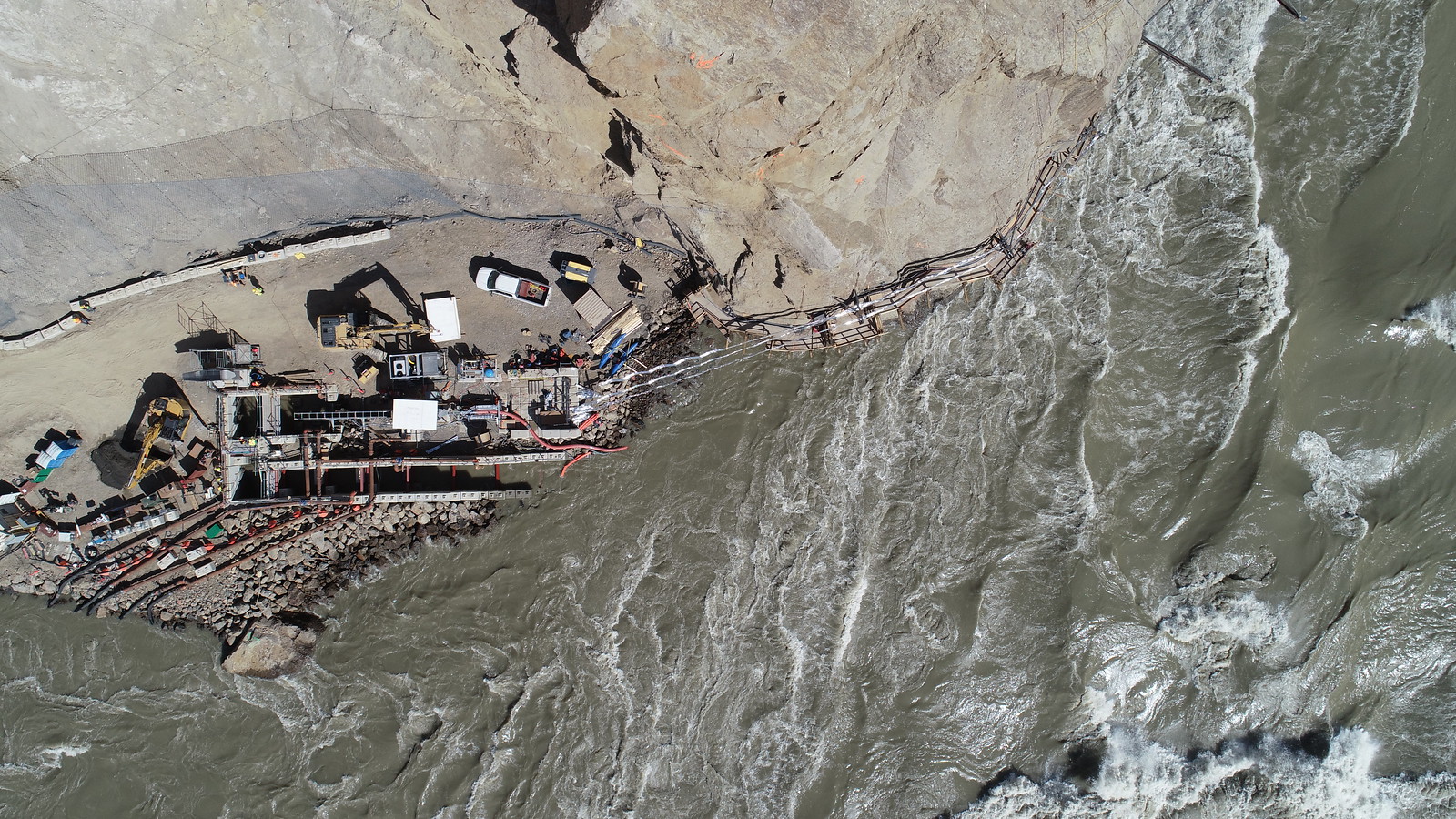
An overhead view of the Big Bar site with the Whooshh Passage Portal setup above the river blockage.
Working with DFO and its contractor, Kiewit Construction, Whooshh installed the systems with a 6-tube transfer array at the base of the Big Bar site within the 90-day timeline.
“We have the fish swim in, they slide under the scanner, they glide through the tube, and then they are gently deposited into the water about 500 feet upstream, and that all takes place in about twenty seconds,” said Vince Bryan III, CEO, Whooshh Innovations.
For the Big Bar project, Whooshh modified their traditional systems to pass fish through a total of 3,000+ feet of misted tubing. Normally the Passage Portal transfer tubing would be secured by stanchions leading over the dam; in this case, they were hung from the face of the remaining rock cliff. Whooshh also made the system portable by placing the components on skids, which could be quickly moved when the river water rose rapidly.
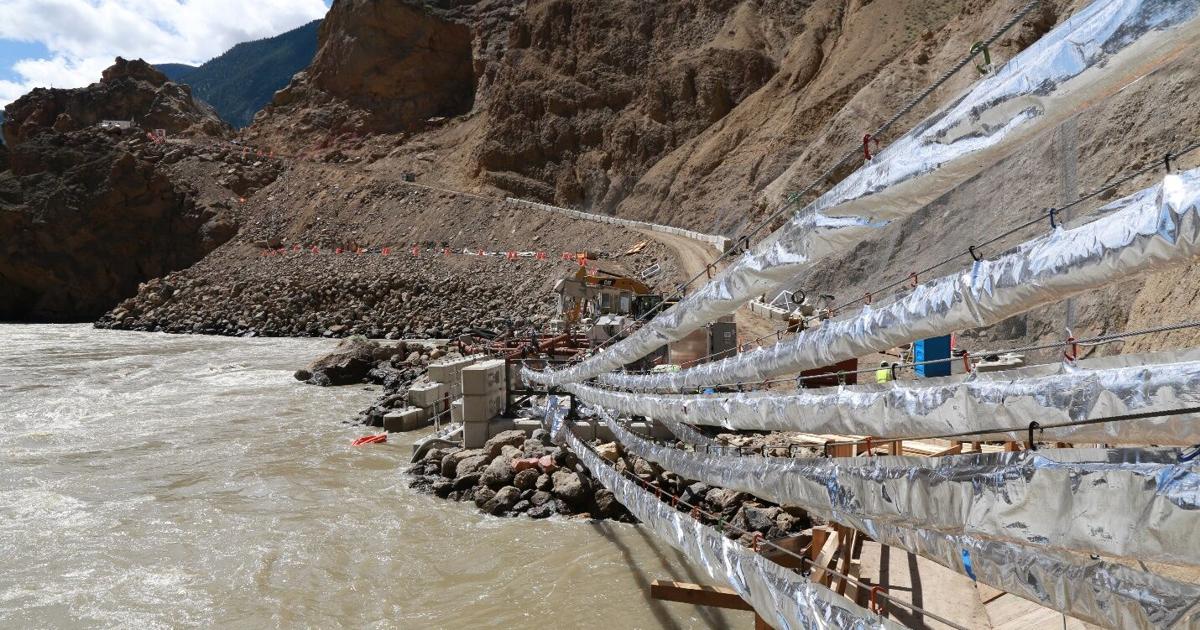
The Whooshh Passage Portal running alongside the cliff at Big Bar.
WHY IT MATTERS: PRESERVING THE RUN
More than 275,000 salmon passed safely through the Big Bar site to continue toward their spawning habitat, which preserved the critical salmon run, once in danger of complete loss. Whooshh technology was more effective than the traditional trap and transport methods, moving thousands of fish and reducing labor. In addition, DFO was able to use the Passage Portal system to retain data on 17 times the number of fish, greatly exceeding the average data collection performed by biologists. This data is used to inform conservation efforts, which, in turn, works toward understanding and preserving the health of future salmon runs.
The work at Big Bar inspired the creation of a documentary titled “Safe Passage,” which provided a unique look into the challenging conditions and scenarios that were faced in setting up the Passage Portal system in the Canadian wilderness. The film also highlighted the important role salmon represent to their ecosystems and to the humans who rely on their survival and propagation. The documentary was featured at the National Hydropower Association’s annual industry-wide Clean Currents Conference + Tradeshow in 2021 and has gone on to receive multiple nominations for “Best Documentary Short” at the Indie Short Fest, Oregon Documentary Film Festival, and the Vancouver Independent Film Festival.
To recognize the “above and beyond” work Whooshh Innovations undertook to save the salmon at Big Bar, the National Hydropower Association awarded the company an Outstanding Stewards of America’s Waters (OSAW) award.
Real-time product demonstrations like Whooshh’s work at Big Bar illustrate not only the importance of protecting fish, but also showcase the progressive technology available to ensure safe, timely, efficient, and effective fish passage over dams, including those associated with hydropower generation.

The Big Bar site as seen from a distance.









